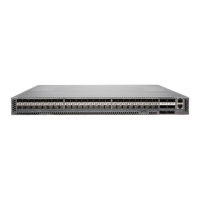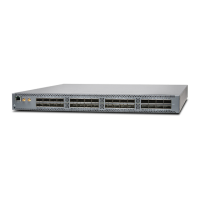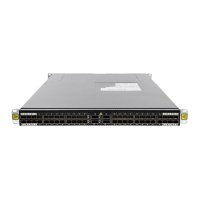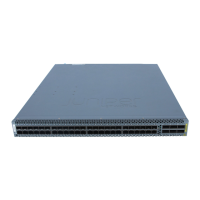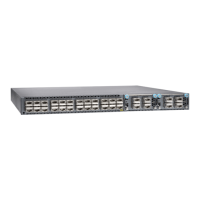Connecting a QFX3500 Node Device to a QFX3008-I Interconnect Device
To form the data plane in a QFX3000 QFabric system, you connect the QSFP+ uplink
ports on the QFX3500 Node device to the QSFP+ ports on the 16-port QSFP+ front cards
in a QFX3008-I Interconnect device.
CAUTION: For redundancy, each QFX3500 Node device must be connected
to each QFX3008-I Interconnect Device. For example, if you have two
QFX3008-I Interconnect Devices, then at least one uplink port on each
QFX3500 Node device must be connected to each QFX3008-I Interconnect
Device. If you are connecting all four uplink ports to two QFX3008-I
Interconnect Devices, we recommend connecting two uplink ports to each
Interconnect device, each to a different front card.
Before you begin to cable the QFX3000 QFabric system data plane:
•
Review “Interface Specifications for Data Plane Connections for the QFabric System”
on page 127 for information about the optical interface characteristics.
•
Ensure that you have taken the necessary precautions for safe handling of lasers (see
“Laser and LED Safety Guidelines and Warnings for the QFX Series” on page 168).
•
Ensure you have installed QSFP+ transceivers in each port you are using. See “Installing
a Transceiver in a QFX Series Device” on page 374.
•
Ensure that you have appropriate fiber-optic cables (see “Interface Specifications for
Data Plane Connections for the QFabric System” on page 127).
To connect a QFX3500 Node device to a QFX3008-I Interconnect device:
WARNING: Do not look directly into a fiber-optic transceiver or into the ends
of fiber-optic cables. Fiber-optic transceiversand fiber-optic cablesconnected
to transceivers emit laser light that can damage your eyes.
1. If the fiber-optic cable connector is covered by a rubber safety cap, remove the cap.
Save the cap.
2. Remove the rubber safety cap from the QSFP+ optical transceiver on the QFX3500
Node device. Save the cap.
3. Insert the cable connector into the optical transceiver.
4. If the connector at the other end of the fiber-optic cable is covered by a rubber safety
cap, remove the cap. Save the cap.
5. Remove the rubber safety cap from the QSFP+ optical transceiver on the 16-port
QSFP+ front card on the QFX3008-I Interconnect device. Save the cap.
Copyright © 2012, Juniper Networks, Inc.284
QFX3000 Hardware Documentation
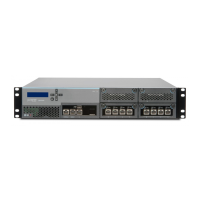
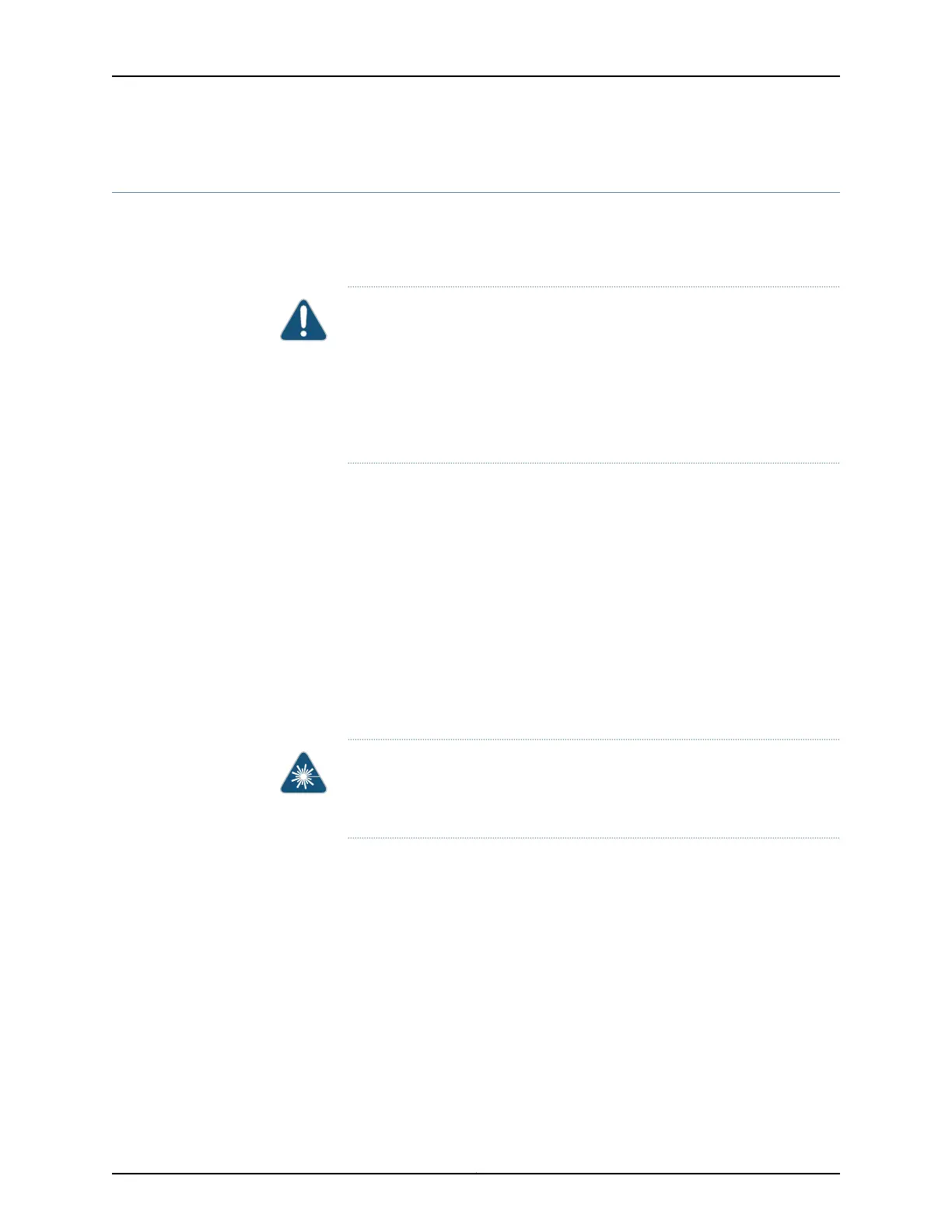